Cúcuta market, February 18th 2023.
“Where are you from?” the car passenger shouted at me out his window, smiling, as we were both stopped at traffic lights.
“Irlanda, Irrr-land-ah. Ireland,” I shouted back.
“Amazing! Amazing! Welcome to Cúcuta,” he said and, with that, the lights changed and we were all off again — in the typical Latin chaotic scramble of bikes and buses, cars, taxis and trucks. Lane discipline is all very fine in theory but. . .
At the next lights, I had time to rummage in my tank bag and retrieve one of my Ireland shamrock stickers and a Tip2Top sticker and hand them to your man. He was wearing a white shirt with a Chevrolet logo embroidered onto the chest pocket so I assumed he worked in cars. He was delighted with them. “Alaska!” he said turning to his friend, the driver, “Alaska! Where you going now,” he asked.
“I don’t know,” I said, truthfully, “I’m looking for a hotel or hostel.”
He began to give me some general directions and then paused, before saying: “OK. Follow us.” Soon, we were outside a more than acceptable-looking modern hotel, a six storey, well-maintained block with secure carpark close to, I thought, the border with Venezuela. I thanked them for their help and got myself installed for a few nights. The frontier and the flow across it from Venezuela of refugees, or internally displaced persons (IDPs) as they are often termed, was my main interest in coming to Cúcuta (which is pronounced koo-koo-tah). But for now, that could wait.
Cúcuta is a medium-sized city (population close to a million) in northern Colombia. It sits right on the border with Venezuela. It’s a real city with a large commercial and retail centre that buzzes, especially at weekends, a cathedral (very dull and uninteresting as it happens) and some cute trendy areas with nice restaurants and bars. That said, the area of the hotel to which the lads brought me didn’t have much to recommend it. On one side of it, there was a vacant lot, on the other, a series of very so-what-ish looking shuttered shops and opposite, a huge apron of concrete on which were four very large — wide and long — single storey old buildings at right angles to the road, and separated by expanses of concrete large enough to accommodate the movement of articulated lorries. They looked as though they dated from the mid 20th century and were like the sort of warehouse depots one sees associated with train stations. Down each side at intervals, were large shuttered openings, numbered Puerta No 1, Puerta No 2, etc, connected by a raised platform-cum-footpath that trucks could reverse to, allowing for ease of delivery or dispatch of goods onto, or off, the plinth. The complex was empty when I arrived on the hotel and had that dead look about it that often characterises old distribution depots.
By the time I had got up next day, the place had exploded into life!
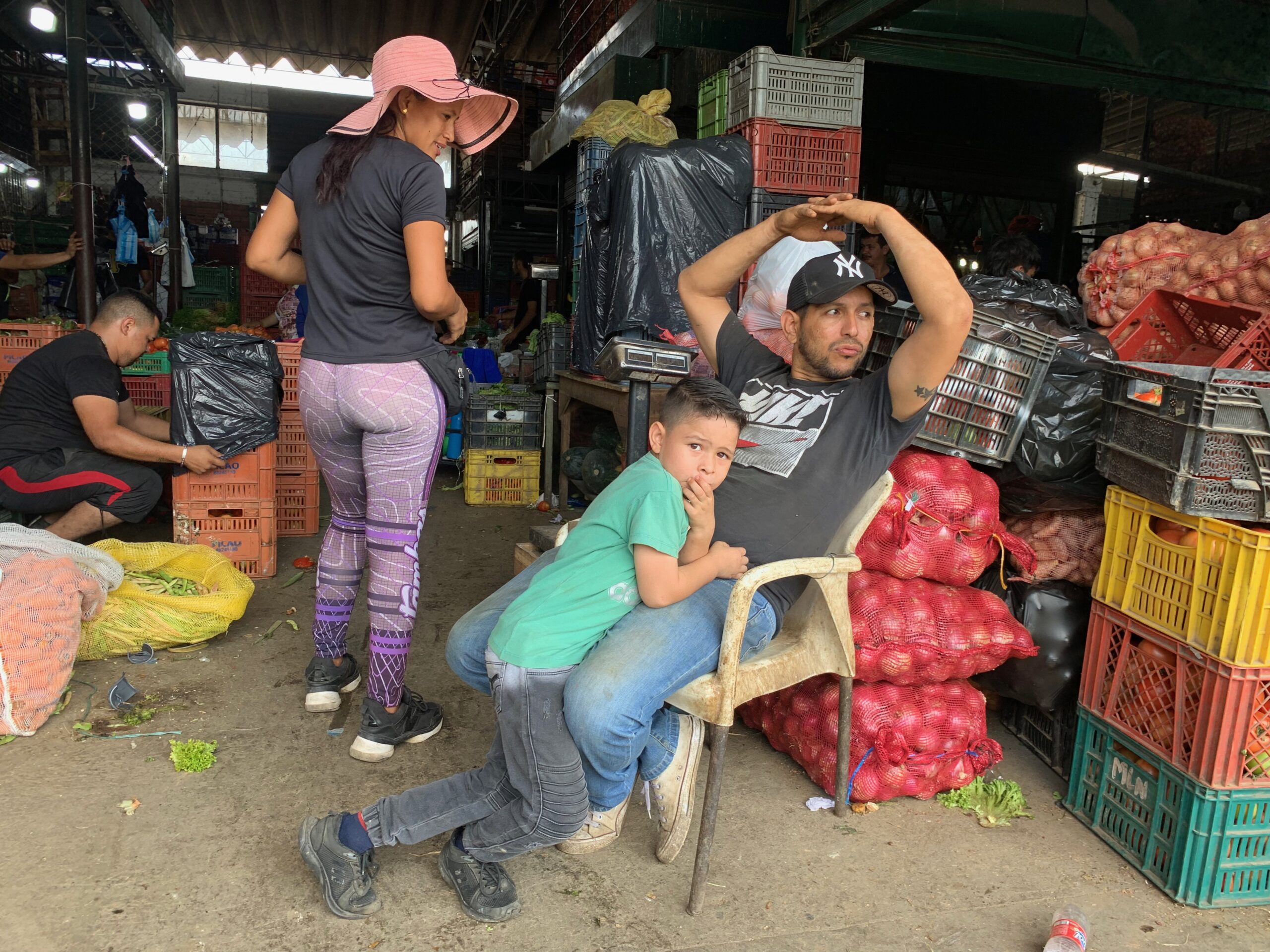
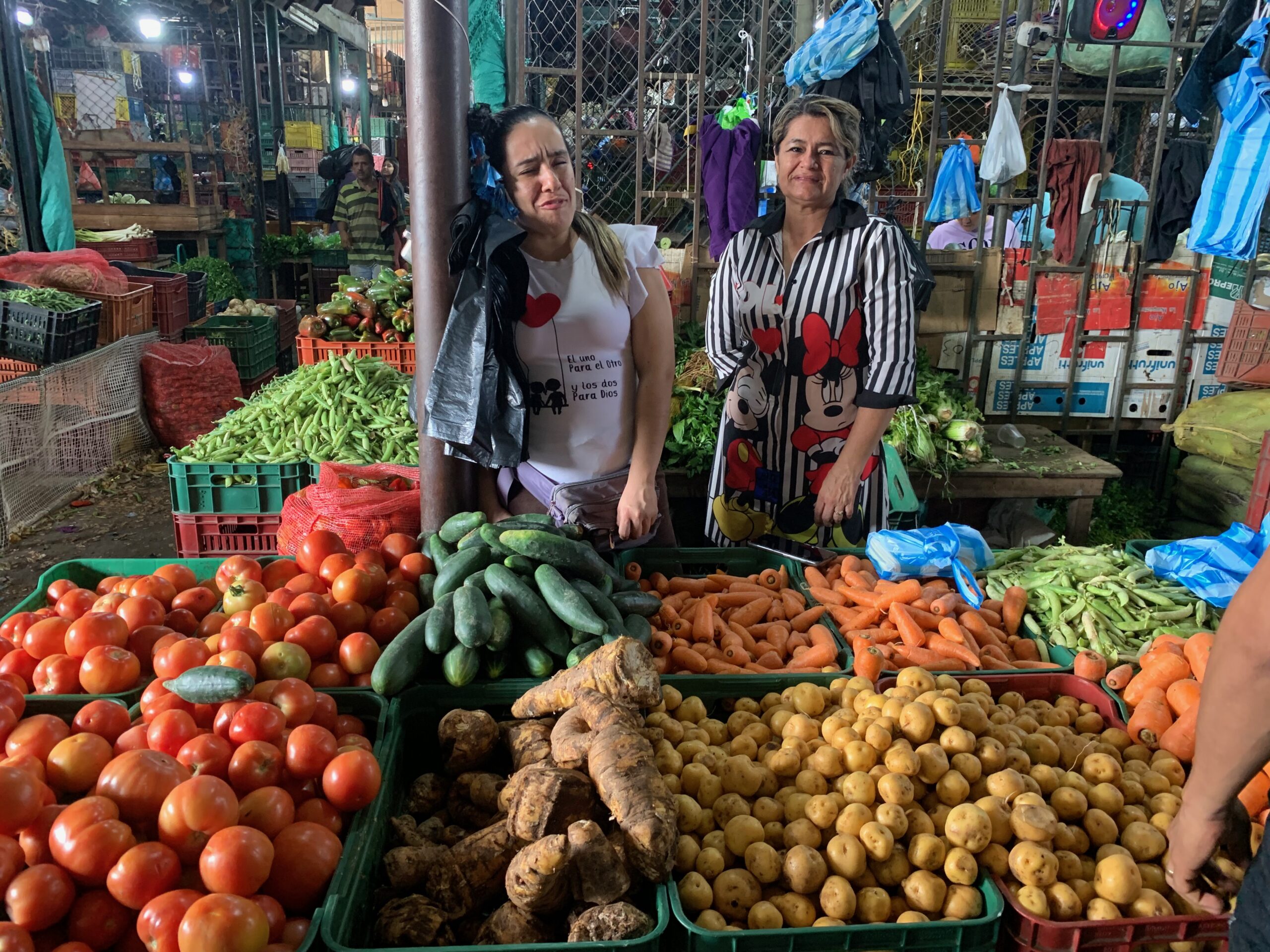
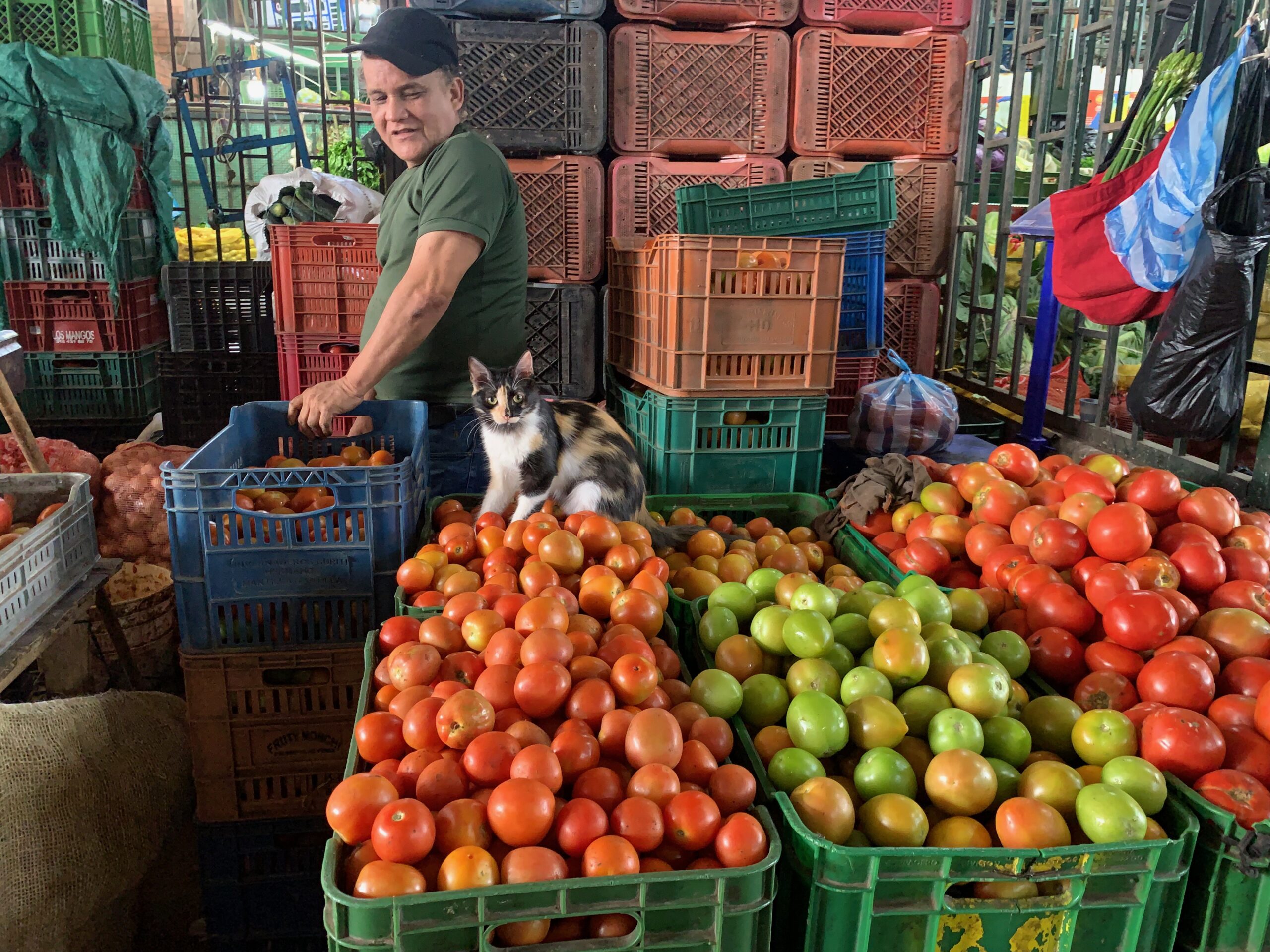
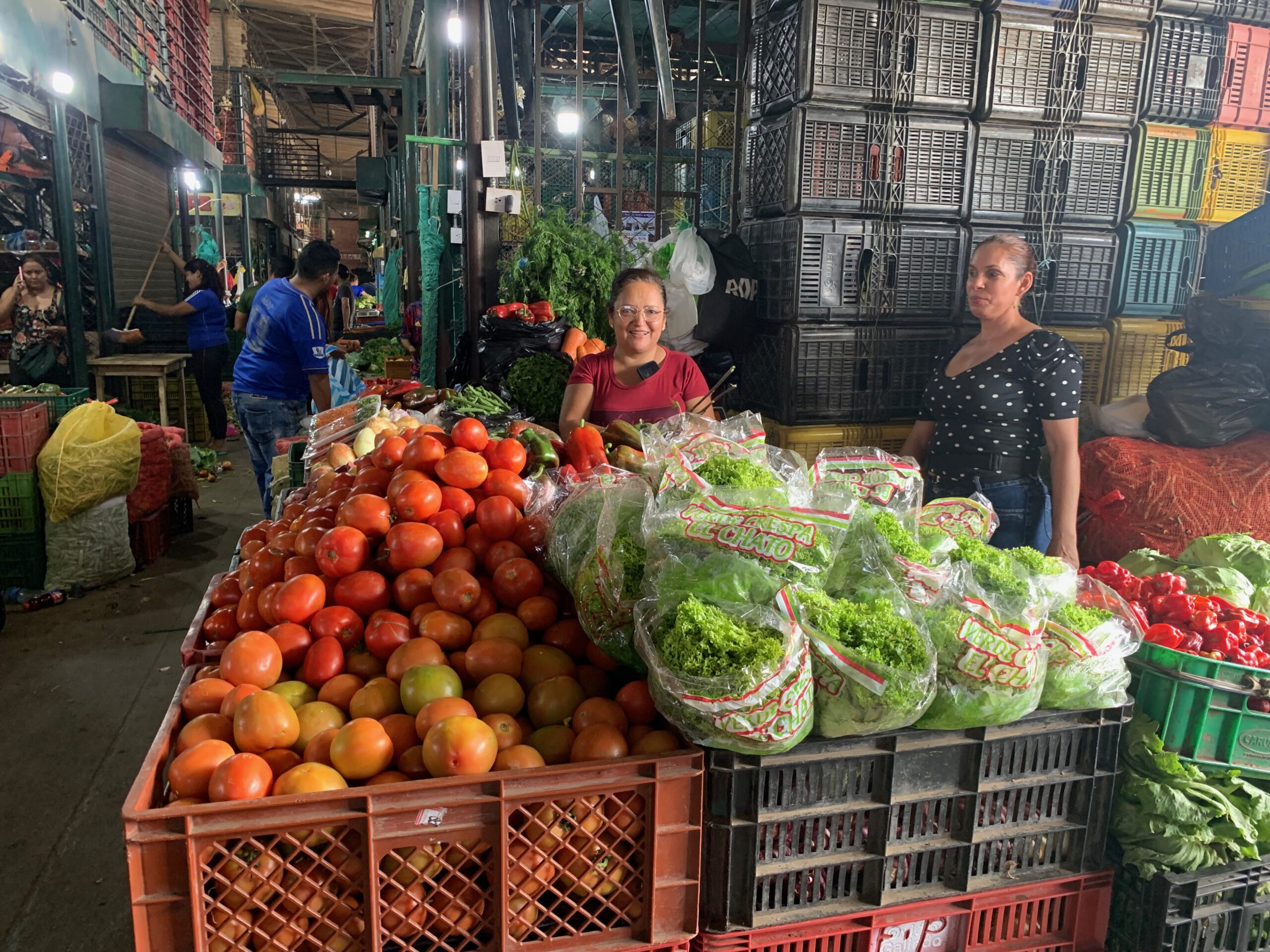
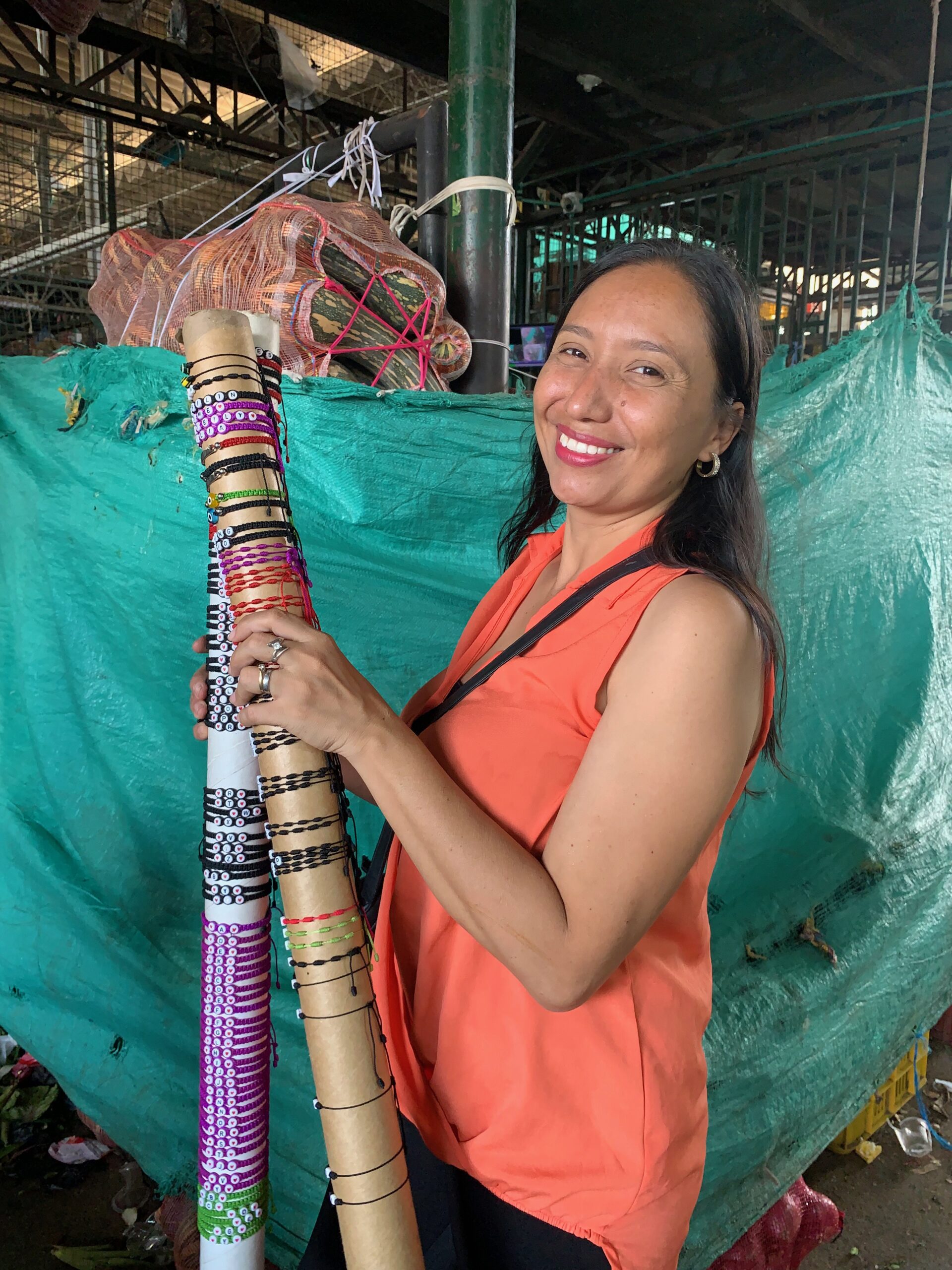
There were people everywhere — people and trucks, hawkers and stall-holders; fellows carrying sacks of onions and stacks of boxes; fellows with four-wheel trollies and two wheel slingsbys rushing this way and that, on to and off the back of trucks. There were buyers and sellers, and fellows going around sweeping up the mess trying to keep the place looking at least a bit tidy. It was a wonderful scene of early day market life in full flow.
The first of the market halls I entered specialised in trading in yuca (cassava), potatoes and bananas, green and yellow. A yuca seller was slicing them in half and trimming the tops and bottom for display. A woman watched intently, seeming to struggle making a decision. A young walked past with a tiny kitten on a box, apparently just acquired.
The next building specialised in all kinds of fruit and vegetables and was a riot of colour. I love the urgency and repartee that characterises such places and how all that sits alongside people lounging in the shadows having done their hard bit for the day. At the front of a display, there’ll be the seller, constantly arranging and re-arranging the display, often shouting out special offers and bantering with potential buyers, while behind in a dark bit at the rear, someone might be asleep on sacks of produce, having been there since god-known-what-AM lugging it all in off a lorry, or down from the wire cage storage room above. There were displays of almost any food anyone could want — potatoes, parsnips, onions and garlic, tomatoes, peppers and chilis, beans, beetroot, lettuce, celery and carrots, squash, broccoli and maize. And if not on display, there were sacks of everything and sometimes, like with onions or herbs, items might be bound up in themselves and hung for show. And amid all the hustle and bustle, a young girl sang for her supper and lady wandered about selling woven wrist bands.
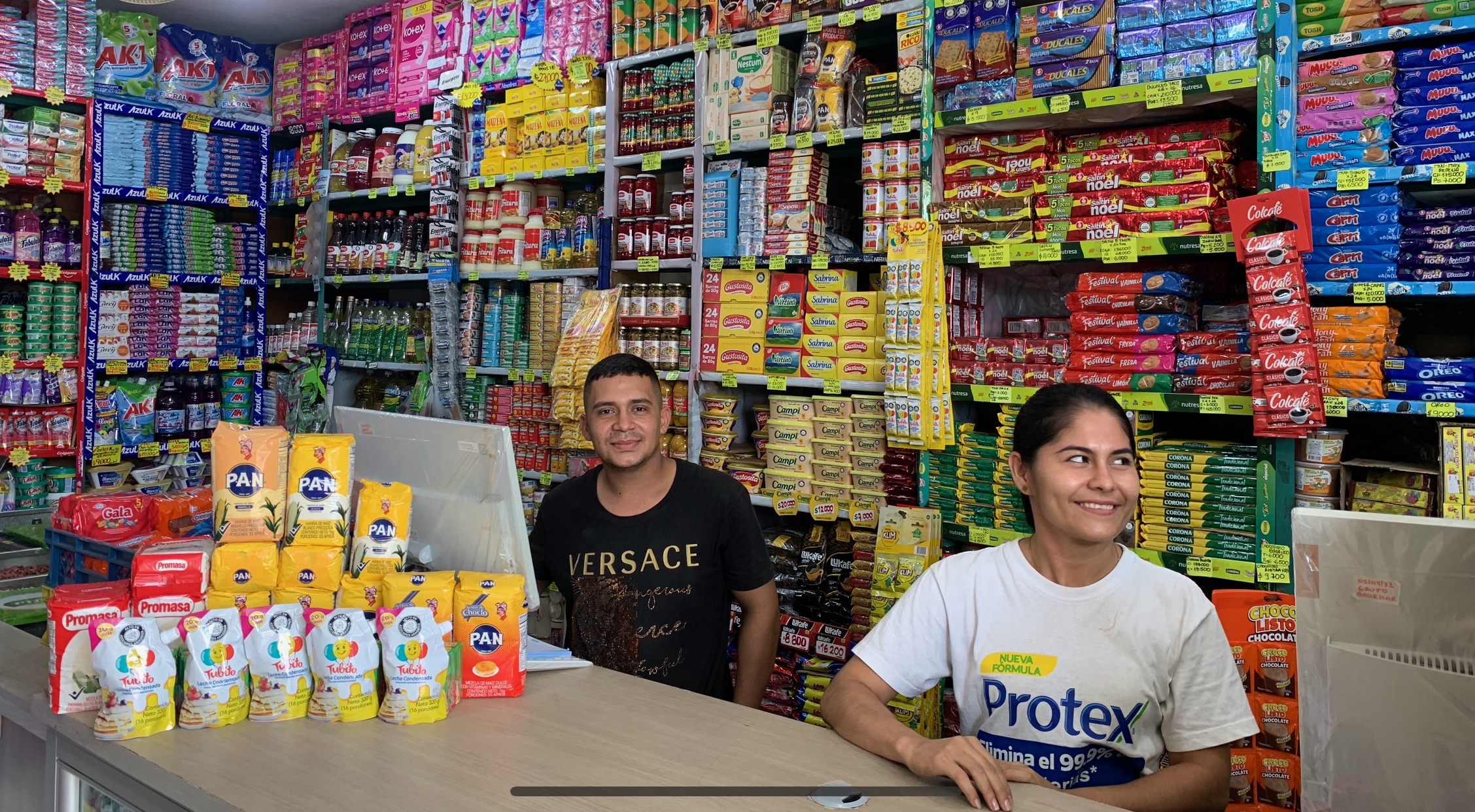
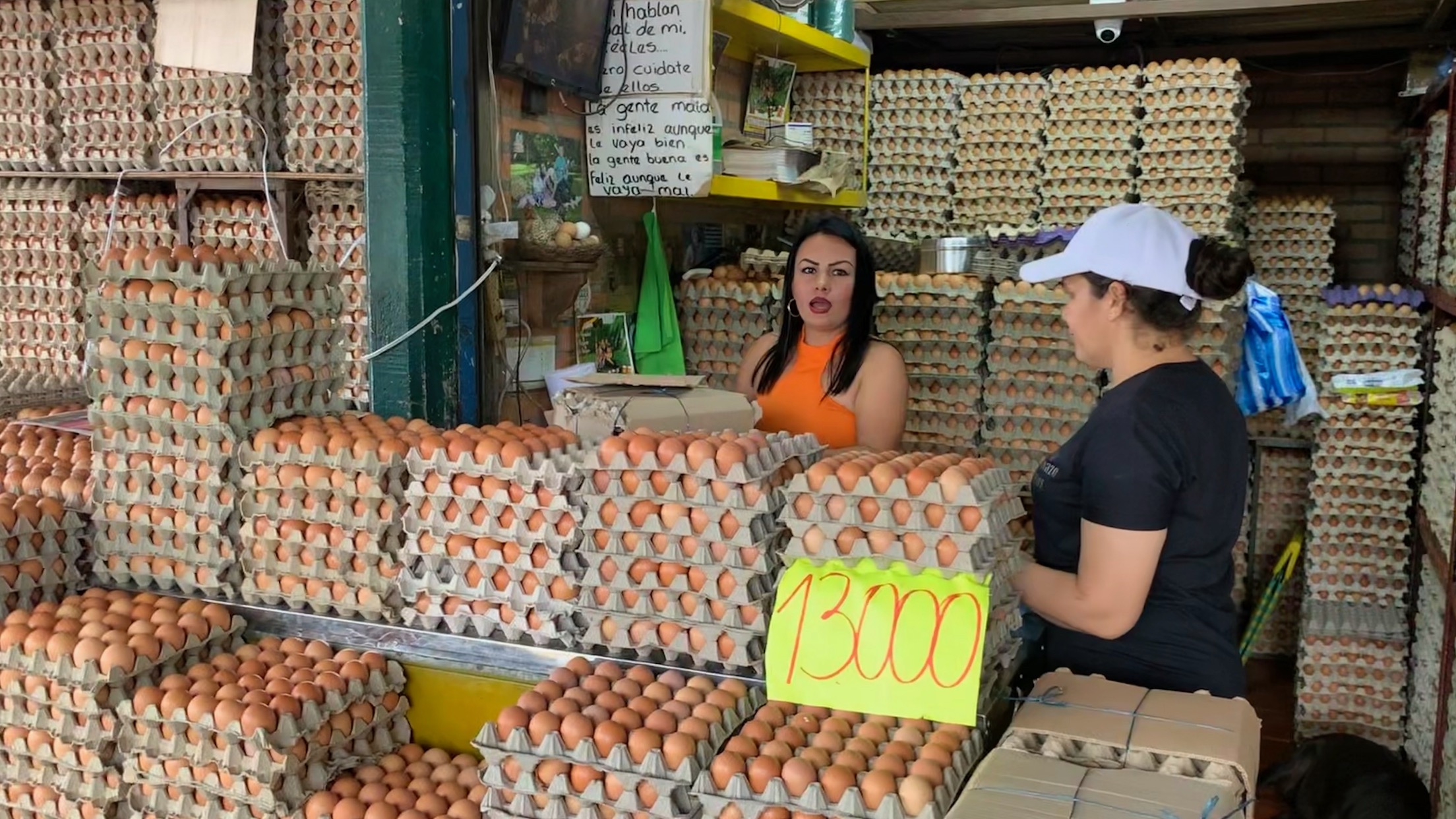
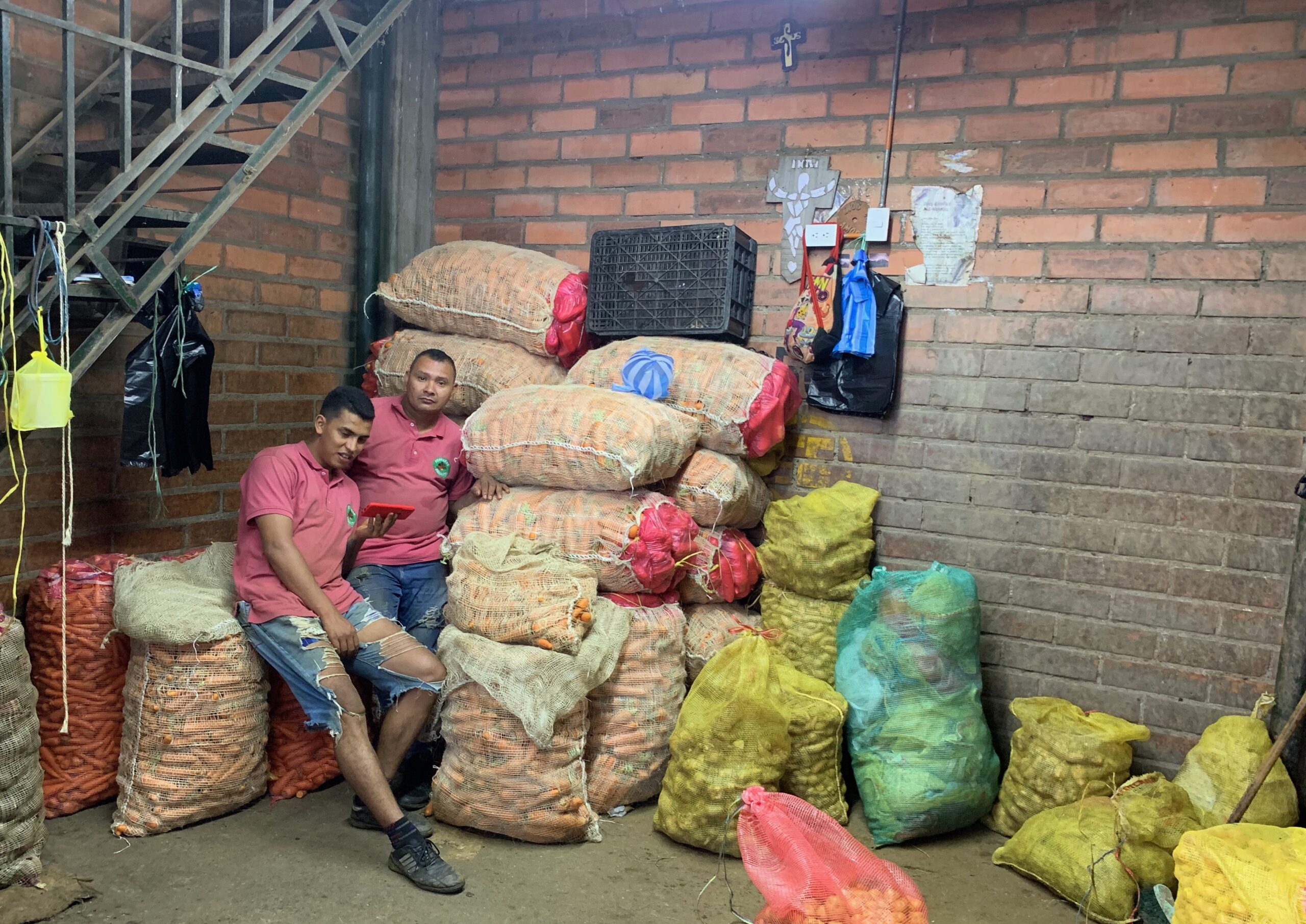
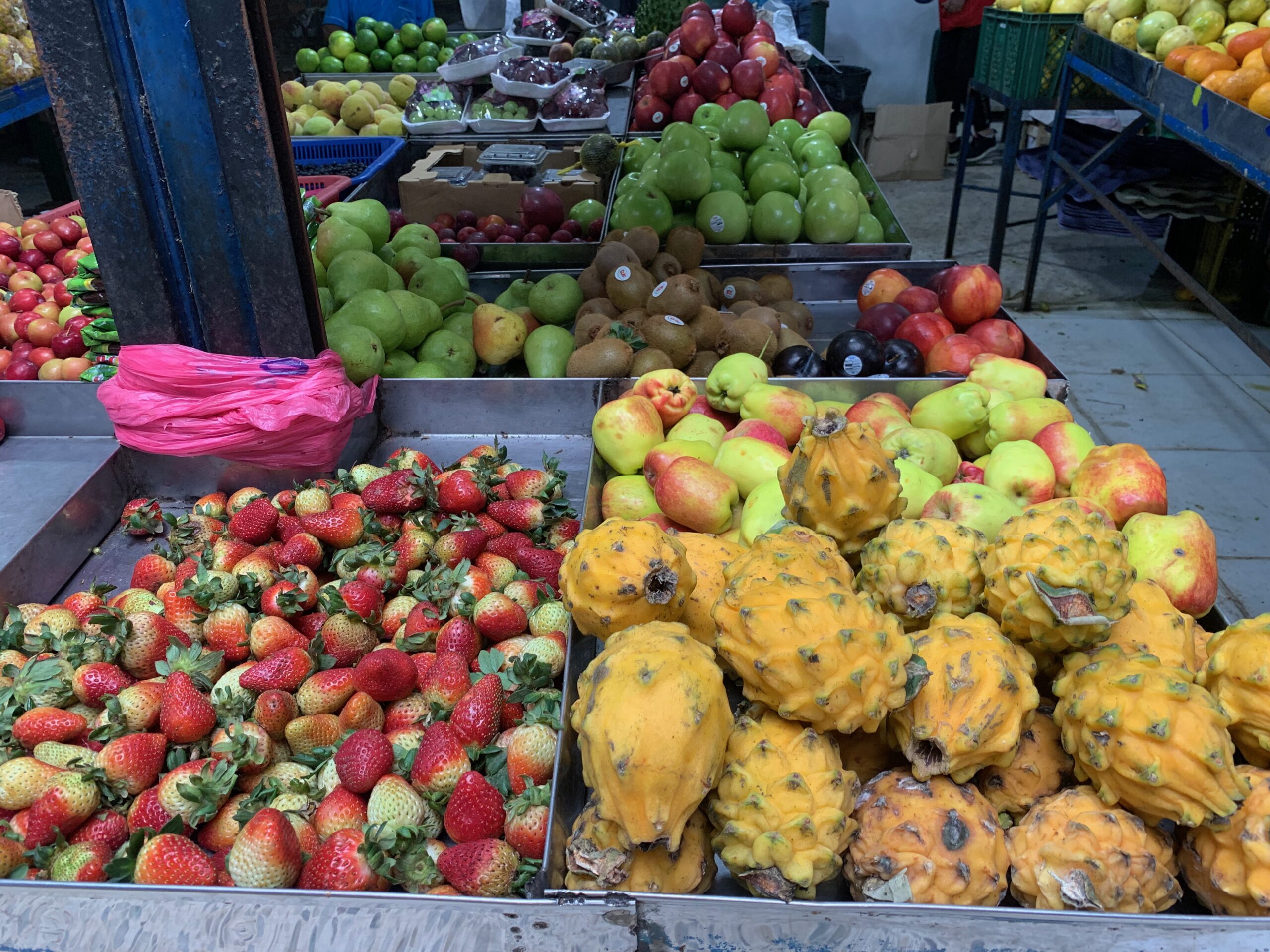
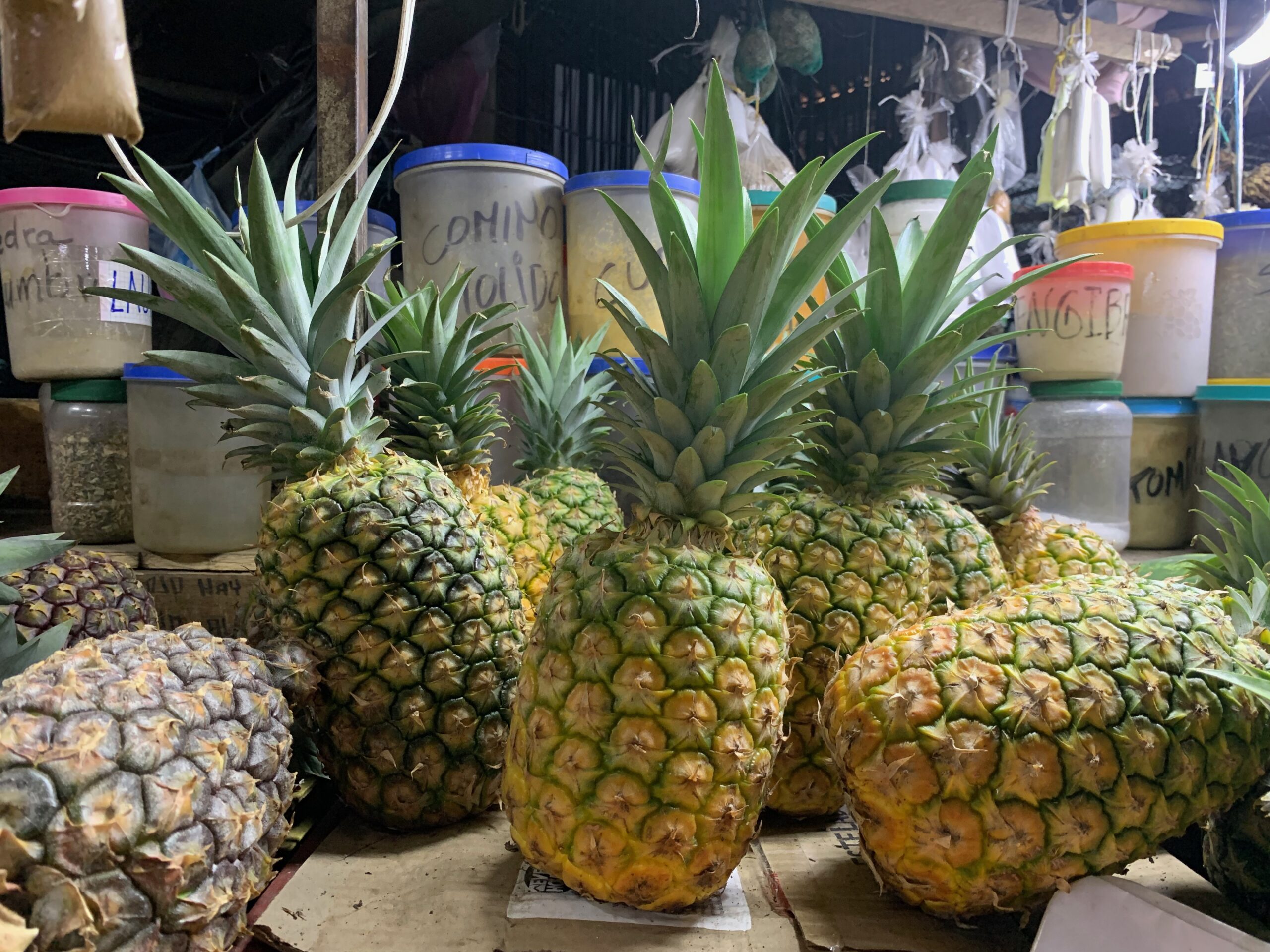
The third building was a series of individual wholesale and storage depots for bulk sale of staples such as rice which, I had previously not known, is eaten with almost every meal in Colombia, Ecuador and Peru, and probably other parts of Latin America. The fourth building was similarly given over to individual outlets specialising in bulk sale of more household-type supermarket items such as tea and coffee, pasta, biscuits, oil and other flavourings, edibles in tins or jars, cleaning fluids, and toiletries.
I wandered around, looking at everything, taking photos or making videos, almost always asking first and usually being told OK, and I never once felt a thread or had a shred of anxiety. I would have stuck out like a sore finger in these rough-and-ready market halls, an obvious outsider, a soft target. I’ve lost count of the number of (well-intentioned) warnings: if you are in (fill in country/city), don’t go to (fill in specific location), don’t take out your phone and be very careful who you talk to, etc etc. I have found the opposite of everything feared. I talk to (or try to talk to) everybody and they all respond, often leading to half decent conversations and mutual photo showing. If things every do go wrong one day, and someone gives me a dig and grabs my phone, the loss will be worth all those times when I have felt nothing coming back at me but curiosity and the pleasure that comes from shared random encounters.
“Hola gringo!” said the woman at the juice bar across the road, in the other, hitherto dead building but which now, like the rest, was alive and selling meats, eggs and dried beans, fruit and veg, and pots and pans.
“Hola,” I replied, and then tried to clarify this gringo matter. “Mi pais es Irlanda,” I said to her. “Es gringo…” and then I ran out of road and so pointed to the white skin on the underside of my arm, “es gringo solo” and pointed again to my whiteness. I was trying to ask whether the term gringo applied generally to anyone not Colombian and who was white.
“No,” she said, “gringo es americano.”
“Solo americano?” I asked.
“Si,” she said, “solo americano.”
“So,” I said, “si mi pais es Irlanda; mi no gringo, si?” (Si means both if and yes which can be a little confusing when used in the same sentence.)
“Si,” she said smiling.
I tried to indicate that it really didn’t matter to me one way or the other, but that I was just curious to properly understand the application of the term, which in my experience has been applied to me with a certain leg-pulling affection but I’m not sure that quite got through. In any event, I asked her for a freshly made blackberry (very popular here) and banana smoothie.
She turned to the smoothie maker and said: “Un jugo, mora y banano, para la gringa.”
And she gave me a big smile.
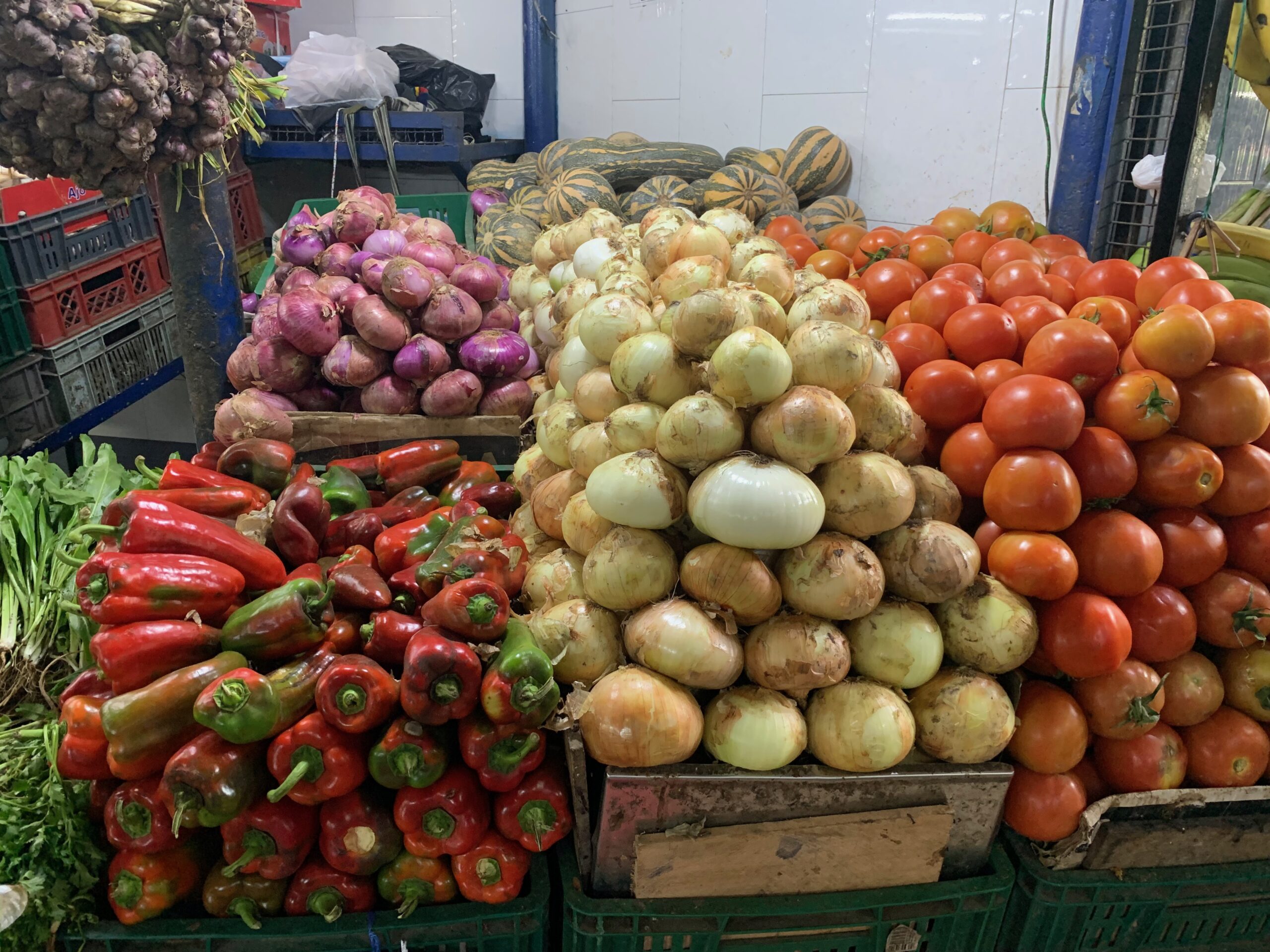
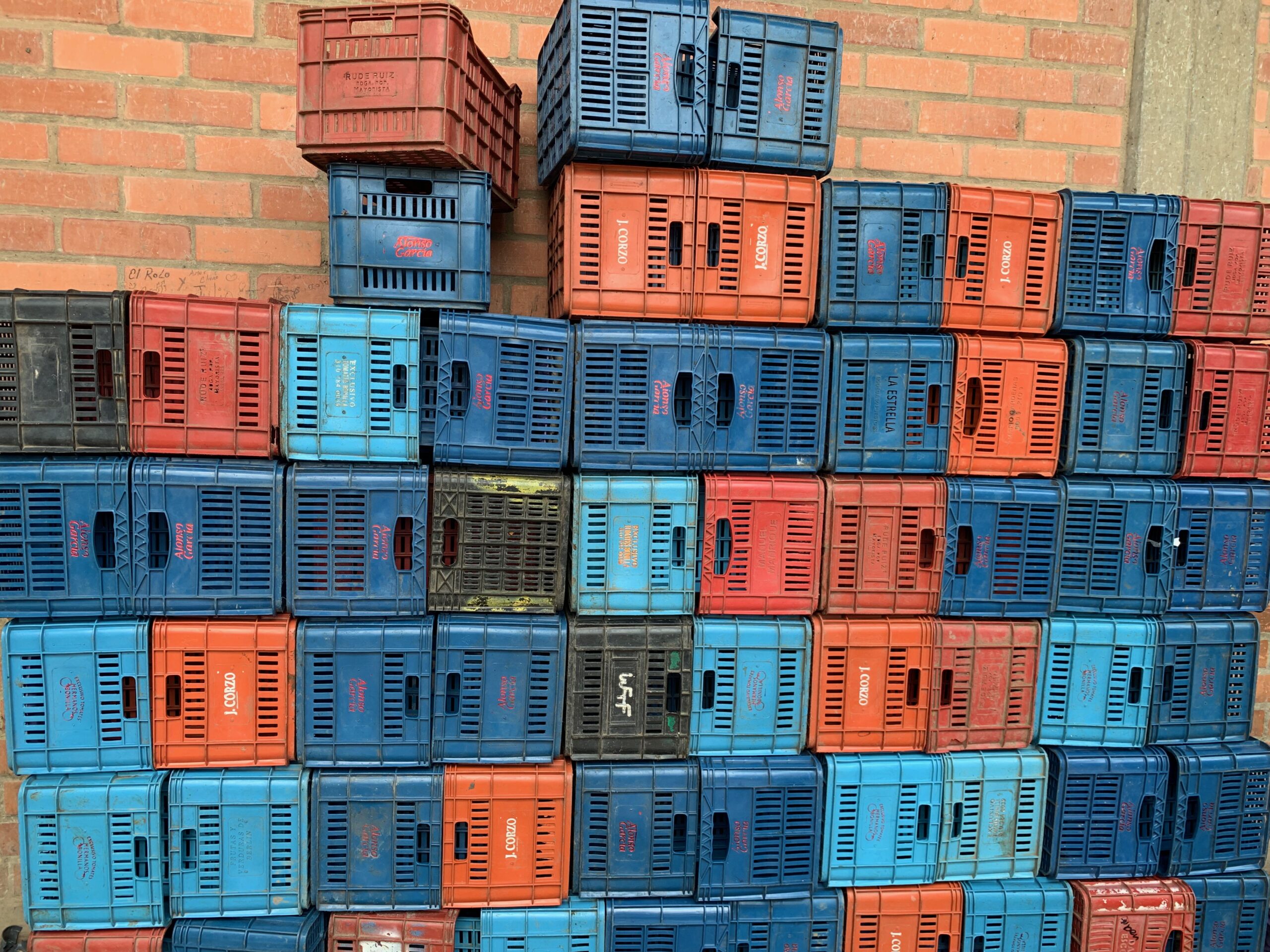
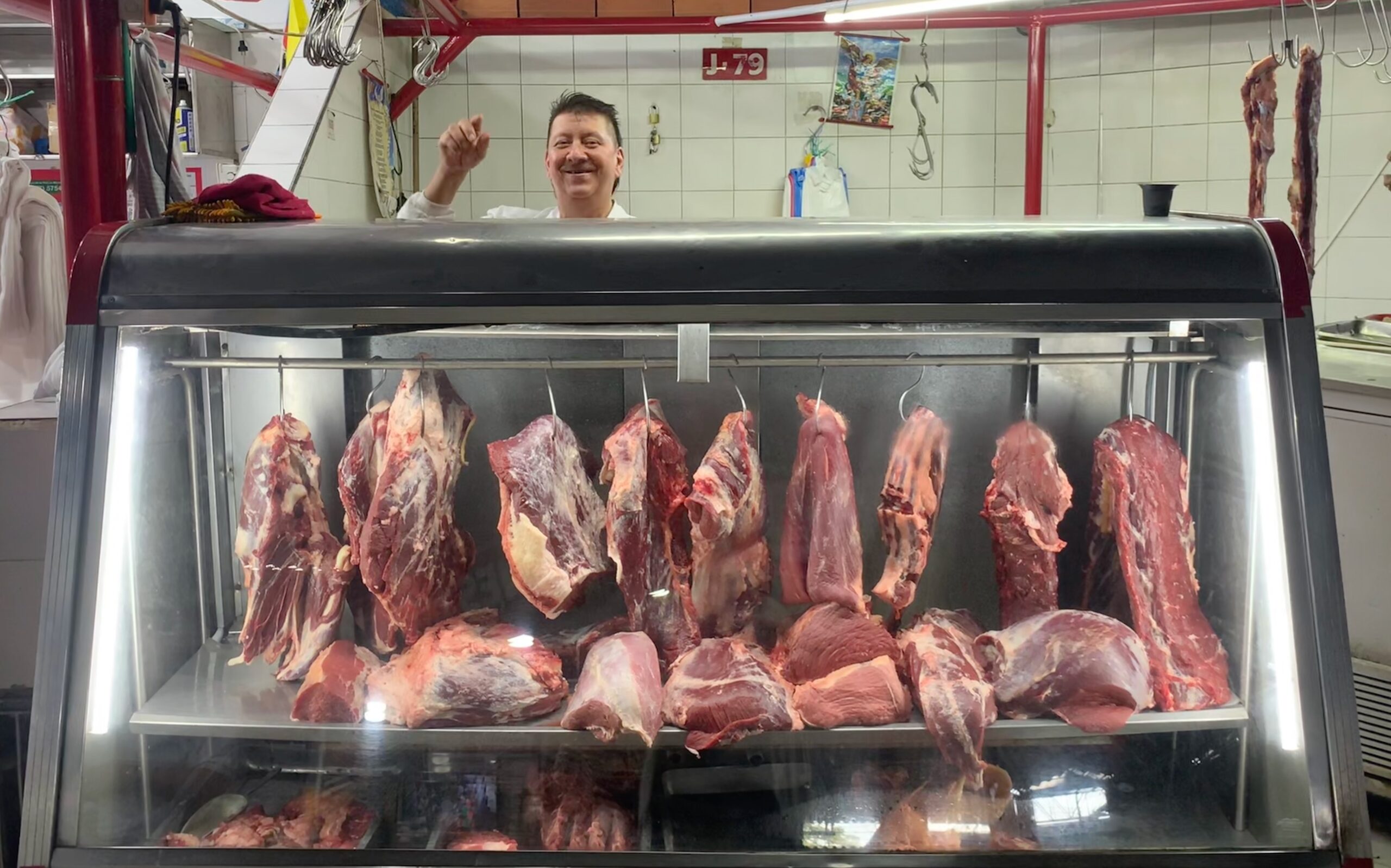
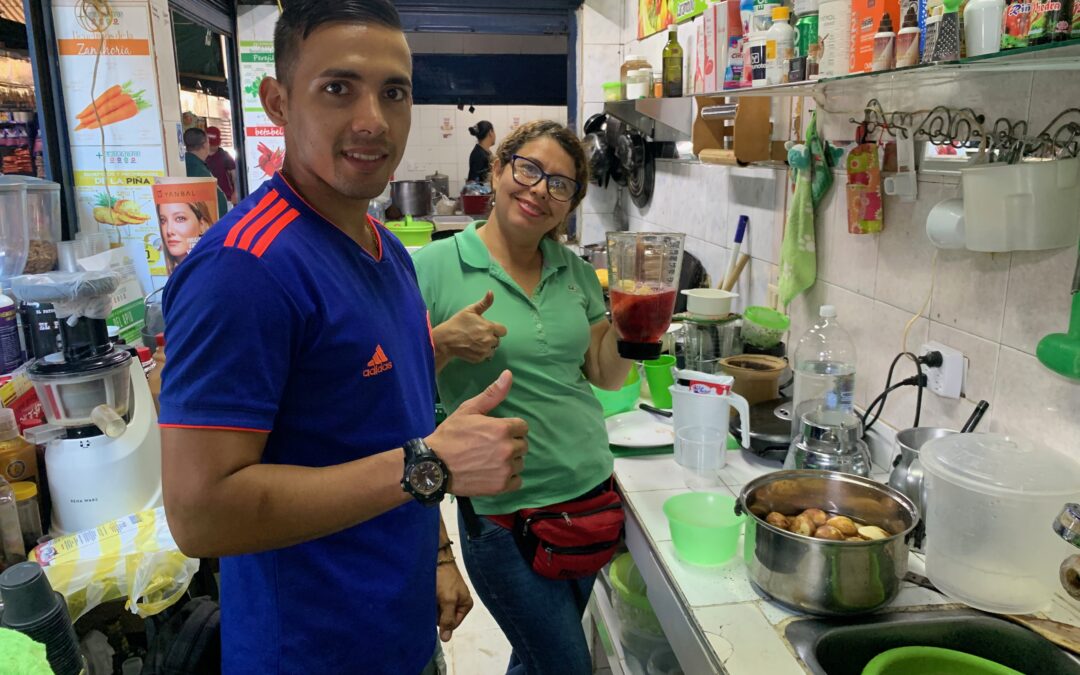
Hi Peter your photos are wonderful. May I ask are they taken by camera or phone? If the former what are you using?
Thanks John! They’re taken on a iPhone Xs Max (iOS version 16.1 — whatever that means!). I’m really not quick enough. Every time I’m in a crowd and using it, I realise I’m missing capturing great moments and I feel often that the big images of landscape really don’t do justice to the scenes either. But I’m glad some opf them at least have worked for you! Best wishes — Peter